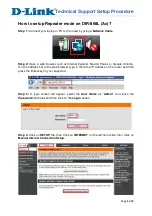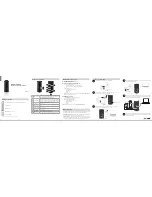
165
Copyright © 2004-2005, Vivato, Inc.
is used to provide an authentication mechanism. It is based on the X.500 standard, but less complex.
Lease Time
The
Lease Time
specifies the period of time the
Server gives its clients an
and other
required information. When the lease expires, the client must request a new lease. If the lease is set to a
short span, you can update your network information and propagate the information provided to the clients
in a timely manner.
LLC
The
Logical Link Control
(LLC) layer controls frame synchronization, flow control, and error checking. It is a
higher level protocol over the
layer, working in conjunction with the
layer.
MAC
The
Media Access Control
(MAC) layer handles moving data packets between
s across a shared
channel. It is a higher level protocol over the
layer. It provides an arbitration mechanism in an attempt
to prevent signals from colliding.
It uses a hardware address, known as the
MAC address
, that uniquely identifies each node of a network.
network devices share a common 48-bit MAC address format, displayed as a string of twelve
(12) hexadecimal digits separated by colons, for example
FE:DC:BA:09:87:65
.
MDI and MDI-X
Medium Dependent Interface
(MDI) and
MDI crossover
(MDIX) are twisted pair cabling technologies for
Ethernet ports in hardware devices. Built-in twisted pair cabling and auto-sensing enable connection
between like devices with the use of a standard Ethernet cable. (For example, if a wireless AP/Bridge
supports MDI/MDIX, one can successfully connect a PC and that AP/Bridge with an Ethernet cable rather
than having to use a crossover cable).
MSCHAP V2
Microsoft Challenge Handshake Authentication Protocol Version 2
(MSCHAP V2) provides authentication
connections between a Windows-based computer and an
or other network access
device.
MTU
The
Maximum Transmission Unit
is the largest physical packet size, measured in bytes, that a network can
transmit. Any messages larger than the MTU are fragmented into smaller packets before being sent.
Multicast
A
Multicast
sends the same message to a select group of recipients. Sending an e-mail message to a
mailing list is an example of multicasting. In wireless networks, multicast usually refers to an interaction in
which the AP/Bridge sends data traffic in the form of
s to a specified set of client
stations (
addresses) on the network.
Some wireless security modes distinguish between how unicast, multicast, and broadcast frames are
encrypted or whether they are encrypted.
See also
and
.
















































